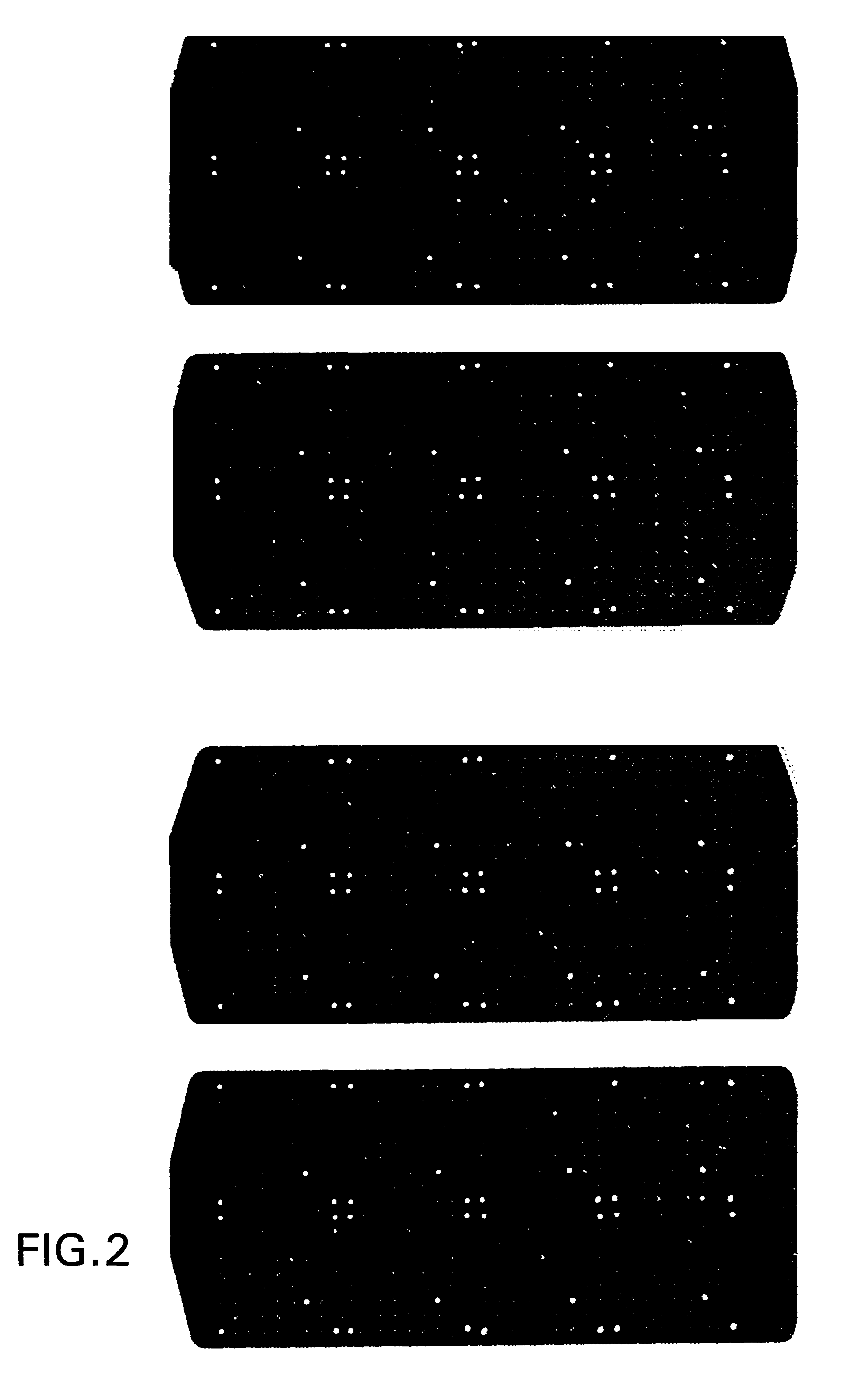Polynucleotide arrays and methods of making and using the same
a polynucleotide array and array technology, applied in the field of spatially-addressable arrays of molecules, can solve the problems of lack of reliability and reproducibility of the method of synthesizing arrays, the difficulty of assaying the quality and integrity of the array, and the current methodologies for constructing such arrays still suffer from certain difficulties
- Summary
- Abstract
- Description
- Claims
- Application Information
AI Technical Summary
Benefits of technology
Problems solved by technology
Method used
Image
Examples
Embodiment Construction
5.1 Definitions
As used herein, the following terms shall have the following meanings:
"Spatially addressable array" refers to an array in which each element or component of the array is identifiable by its spatial address, for example its xyz coordinates. Spatial addressable arrays according to the invention can be one dimensional, for example a linear array; two dimensional; or three dimensional.
"Address" or "spot" refers to a particular position in an array. Each address or spot has unique xyz coordinates. The structure of a compound immobilized at a particular address or spot is definable by its coordinates.
"Polynucleotide" refers to a nucleic acid sequence which is immobilized on a substrate. The polynucleotides of the present invention can contain as few as four bases or as many as several hundred or more bases. The polynucleotides can be composed of natural or modified bases or combinations thereof, and can contain one or more modified interlinkages.
"Target nucleic acid" refers...
PUM
| Property | Measurement | Unit |
|---|---|---|
| Length | aaaaa | aaaaa |
| Ratio | aaaaa | aaaaa |
| Fluorescence | aaaaa | aaaaa |
Abstract
Description
Claims
Application Information
 Login to View More
Login to View More - Generate Ideas
- Intellectual Property
- Life Sciences
- Materials
- Tech Scout
- Unparalleled Data Quality
- Higher Quality Content
- 60% Fewer Hallucinations
Browse by: Latest US Patents, China's latest patents, Technical Efficacy Thesaurus, Application Domain, Technology Topic, Popular Technical Reports.
© 2025 PatSnap. All rights reserved.Legal|Privacy policy|Modern Slavery Act Transparency Statement|Sitemap|About US| Contact US: help@patsnap.com


